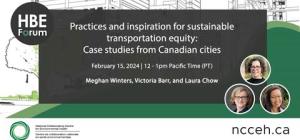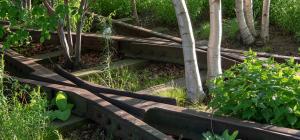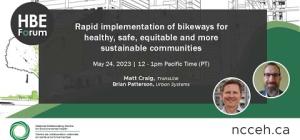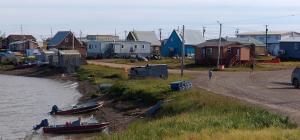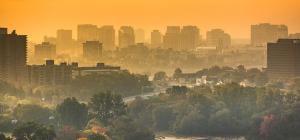
Cities for all seasons – Considerations for using outdoor urban spaces during the winter

At the start of autumn 2020 following months of the global pandemic, speculation abounded as to how Canadians would fare during the long winter months under ongoing COVID-19 restrictions. During the warmer months, many people spent time in outdoor public spaces for leisure, recreation and physical activities when lockdowns limited the availability of indoor venues. The transmission risks for SARS-CoV-2 appear to be lowest in outdoor environments where physical distancing may be easier and concentrations of virus particles may be lower because they become dispersed in a larger volume of air. Accordingly, public health experts advocate spending time outside while taking appropriate precautions (e.g., physical distancing, mask-wearing, and hand hygiene) to reap the health benefits of social, cultural and physical activities in fresh air.
Many municipalities responded to the increased demand for outside space with innovative interventions (e.g., sidewalk extensions and repurposed streets). One 14-country study showed that people who switched from travelling used these areas to recreating locally in compliance with pandemic-related public health recommendations. Several studies also showed that time outdoors contributed to people's mental and physical health by providing physically distant opportunities for social interaction and a welcome change of scenery from homes where many people found themselves spending much of their time.
Transition to winter during the COVID-19 pandemic
The changeover to winter raises the question of how people can continue to benefit from outdoor activity when the weather is cold, wet, or snowy. The benefits of sports such as snowshoeing, skiing and skating, along with advice on how to dress and plan for warmth and safety in different outdoor settings (e.g., mountain areas, trails) appear regularly in the popular press. However, less attention has been given to the importance of being able to spend time outside on a regular basis in city centres and neighbourhoods during the pandemic winter.
Combining the principles of pandemic safety and wintertime use of city spaces may enhance an all-seasons approach to planning that provides benefits to physical (e.g., from the benefits of fresh air and physical activity) and mental (e.g., mitigating isolation and loneliness resulting from lockdowns) health that outweigh transmission risks. In addition to health benefits, a more vibrant outdoor life may support healthier communities.
This blog discusses some options for encouraging activities in outdoor public urban spaces during the winter, while minimising the risks of community transmission of COVID-19.
Examples of "winter cities"
Cold, snowy winters-Edmonton
Some North American cities already had programs to make outdoor city spaces more accessible and inviting during the winter. An example is Edmonton, one of Canada's northernmost and coldest urban centres. In 2012, the city of Edmonton initiated WinterCity, a strategy revolving around creating places, events and routes that encourage people to spend time outdoors during the winter. This program's principles of design can be applied to neighborhoods, streets, sites and other open spaces and include creating protection from the wind; maximizing exposure to sunlight; using colour and lighting for safety and to provide visual aesthetic appeal; and making sure that streets, sidewalks and bike lanes are clear of snow and other obstructions.
Wet winters-Vancouver
Even in cities with typically milder winters, urban planning and design that encourages the use of outdoor public space can be a challenge. For example, urban planners and community groups in Vancouver have called for the creation of more covered outdoor public spaces that offer protection from inclement weather. A local resident has created a locally crowd-sourced inventory of covered public spaces to direct people to protected locations in the city. In 2019, a competition on the design of rain-friendly public spaces was co-sponsored by the City of Vancouver and a local community group, the Vancouver Public Space Network.
COVID-19 precautions in the context of winter activities in outdoor urban spaces
There are few if any guidelines related to COVID-19 and outdoor spaces during the winter. However, many health agencies and municipalities have resources for managing parks during the pandemic that could be adapted to city streets, sidewalks and squares during the winter. One possibility is instituting one-way walking routes to prevent congestion, especially during busy periods such as weekdays when people arrive or leave work, busy shopping periods or during an event. Certain venues such as areas designated for buskers or other outdoor entertainment could also be relocated or managed in keeping with local public health orders during times when these orders permit these activities. Maximising space could be enhanced by ensuring that sidewalks and road crossings are clear of snow and ice. Some measures instituted during the spring and summer to repurpose street space for pedestrians and cyclists could be adapted for winter. Maintaining these areas could provide alternatives to parks and greenspaces that may be less accessible during the winter and relieve congestion in other pedestrian spaces.
Many recommendations on communication, signage and space markings used in parks are relevant for other types of public spaces. Since daylight hours are shorter during the winter, additional attention to lighting may be needed to ensure that signs are visible after dark.
Consideration needs to be given to outdoor temporary structures designed to provide warmth. For example, warming huts that may be prone to crowding or fomite transmission risks might need to be avoided. Heated outdoor waiting areas may need to be supervised to prevent crowding and certain type of heating units may be preferred. For example, spaced overhead heaters may be better than stand heaters around which people might congregate.
All-weather design principles may be linked to pandemic resilience for neighbourhood communities. People are more likely to spend time walking and cycling if they can access schools, public transit, clinics, libraries, shops, and other local venues they frequent on a regular basis. Programs that succeed in increasing the number of people who are outside in their neighborhoods may also benefit local businesses already hard-hit by lockdowns and thereby keep essential services such as small grocers and pharmacies within neighbourhoods. Maintaining these urban "walksheds" requires municipal services such as snow removal, street drainage, lighting, and ensuring that there are comfortable areas for waiting in line or for small physically distant interactions (e.g., awnings, covered sidewalks; repurposed streets).
Key messages
As the risks of transmission of the SARS-CoV-2 virus extend through the winter months, public urban outdoor spaces can be leveraged to meet people’s needs for fresh air, social interaction and physical activity. In the context of a pandemic, it is important to align the basic principles of winter-friendly design with COVID-19 safety precautions. This alignment is consistent with current trends in Health in All Policies (HiAP) approaches in many Canadian jurisdictions that include:
- Creating places where people want to be and can use in their daily lives (e.g., spaces that are aesthetically pleasing and are protected from the elements);
- Creating events that draw people to these places;
- Ensuring that people can safely and easily access and spend time in these places;
- Planning that addresses the needs of sub-populations disproportionately affected by the pandemic (e.g., lower socio-economic groups, racial or ethnic minorities, older adults and youth, and persons with disabilities).
- Ensuring that public health guidance is followed.
With respect to public health guidance, COVID-19 precautions may be accommodated using elements of winter design. These include managing snow and ice removal to maximize space, improving lighting to ensure that signage is visible and considering how sheltering from inclement weather can be managed in a way that avoids crowding.
Additional Resources:
Public Health Agency of Canada. 2014. Fast Facts about Canada's Neighbourhoods and Physical Activity

